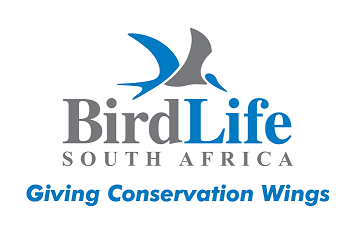Denham's Bustard (Neotis denhami)
CAR summary data
Habitat and noted behaviour
Sightings per Kilometre
Please note: The below charts indicate the sightings of individuals along routes where the species has occured, and NOT across all routes surveyed through the CAR project.
Regional Status

Global Status

IUCN Data (Global)
IUCN 2024. IUCN Red List of Threatened Species. Version 2024-1 (www)Assessment year: 2025
Assessment Citation
BirdLife International 2025. Neotis denhami. The IUCN Red List of Threatened Species 2025: e.T22691905A265042404. Accessed on 25 December 2025.Geographic range:
This species is widely distributed from the Sahel to South Africa in drier habitats but occurs as three distinct subspecies and is further fragmented by declines, but occurrence patterns are somewhat unclear due to movements in response to rainfall. The nominate subspecies occurs in west Africa east to north Uganda, Sudan and South Sudan and west Ethiopia (although rare [Ash and Atkins 2009]), and likely northernmost Kenya (Loki Plains [eBird 2025]). It migrates north following rains from May and June and returns September and October, being present in Niger and Côte d'Ivoire in the dry season but is present year-round in Central African Republic (Collar and Garcia 2020). There are only rare, rainy season records in southwestern Mauritania, Senegal and Gambia. It is also present in Guinea, Sierra Leone, Mali, Ghana, Burkina Faso, Togo, Benin, Nigeria, Cameroon, and Chad (Collar and Garcia 2020).Subspecies N. d. jacksoni occurs from Kenya and west Tanzania, Rwanda, Burundi, southeast Democratic Republic of Congo (DR Congo), Malawi, Zambia (a stronghold [Collar and Garcia 2020]), Zimbabwe, and Botswana (where it is very scarce [Hancock 2008, S.J. Tyler in litt. 2013, Tyler 2013]), and occurs to southern Congo, western DR Congo, and across the central plateau in Angola (Dean 2000, Borrow and Demey 2001) and Namibia (Hockey et al. 2005).
The third subspecies, N. d. stanleyi, occurs from the extreme southern tip of Mozambique, South Africa and Eswatini. It is considered a vagrant in Lesotho (Ehlers Smith 2025).
It has suffered population declines through much of its range (Urban et al. 1986, Collar and Garcia 2020). The nominate subspecies has declined rapidly in Nigeria (Collar and Garcia 2020) and there are very few recent records across West Africa away from protected areas, especially Mole National Park in Ghana and Pendjari National Parks in Benin (J. Brouwer in litt. 2012, eBird 2025, GBIF.org 2025). It is still considered common in Central African Republic (Collar and Garcia 2020) and large numbers still occur after rains in Chad (Wacher et al. 2012) and this region likely holds the bulk of this subspecies' population. But there have been also been declines in Sudan, South Sudan (del Hoyo et al. 1996) and Uganda (Carswell et al. 2005).
The Rift Valley in Kenya was formerly regarded as its stronghold, but the species declined there during the last century and was regarded as the most threatened bustard in Kenya by the end of the 1980s (Lewis and Pomeroy 1989), with fewer than 300 considered to remain by 1999 (L. Bennun in litt. 1999). Further south, Zambia is considered a stronghold for the species (Dowsett et al. 2008), but in South Africa, studies indicate that the species has decreased in abundance throughout much of its range in the past few decades (Hofmeyr 2012) and there is a significant range contraction modelled from Southern African Bird Atlas Project data (Ehlers Smith 2025).
Habitats:
Found up to 3,000 m (del Hoyo et al. 1996). It inhabits grasslands, grassy Acacia-studded dunes, fairly dense shrubland, light woodland, farmland, crops, dried marsh and arid scrub plains; also grass-covered ironstone pans and burnt savanna woodland in Sierra Leone and high rainfall sour grassveld, planted pastures and cereal croplands in fynbos in South Africa (del Hoyo et al. 1996). It feeds on insects, small vertebrates and plant material (Collar 1996, T. Dodman in litt. 1999). The breeding season is variable and consequently unclear, perhaps indicating opportunism in reaction to rainfall (del Hoyo et al. 1996). The clutch-size is one or two (del Hoyo et al. 1996).The habitat is inferred to be undergoing a continuing decline in area and quality with widespread conversion of grassland and light woodland to agriculture and commercial afforestation (Turner and Goriup 1989, Collar 1996, Ehlers Smith 2025), and overgrazing degrading habitat in parts of the range (e.g. Eswatini [Ehlers Smith 2025]).
Population:
The global population size has not been quantified and it is difficult to do so given the poorly understood movement patterns and very limited information for large portions of the range. The southern African population size is estimated to fall between 2,500-10,000 mature individuals (Ehlers Smith 2025), with other estimates of 956 wintering in the Western Cape and 300 breeding individuals northeast of South Africa (Collar and Garcia 2020). It remains frequently encountered in some areas, and is considered common in the Central African Republic and parts of Uganda (del Hoyo et al. 1996). It can be abundant following rains in Chad and following rains more than 400 birds were detected in surveys sampling just 6% of the 77,360 km2 Ouadi Rimé-Ouadi Achim Game Reserve (RFOROA) (at least half of the reserve supports suitable habitat) in Chad (Wacher et al. 2012).However, in much of the rest of the very large range recent records are few and largely concentrated in protected areas (GBIF.org 2025).
Threats:
Hunting is the primary cause of declines across the Sahel (Newby 1990) and throughout West Africa (Turner and Goriup 1989, Collar 1996, P. Hall in litt. 1999). In eastern and southern Africa, hunting is also a problem (Parker 1999), but the main threat appears to be conversion of grassland and light woodland to agriculture and commercial afforestation (Turner and Goriup 1989, Collar 1996, Ehlers Smith 2025), with overgrazing degrading habitat in parts of the range (e.g. Eswatini [Ehlers Smith 2025]). Collisions with power lines may be a significant threat in parts of the range, particularly South Africa (Shaw et al. 2010, Hofmeyr 2012). A total of 18 individuals were recorded killed along 199 km of distribution power lines in the Overberg region between September and December 2008 (Shaw et al. 2010), suggesting that collision mortality could easily be sufficient to cause population declines at least in this region. A rapid expansion of the power network associated with renewable energy infrastructure is underway in South Africa and indeed power line expansion is occurring in areas throughout the range. Collisions with wind turbines may be an emerging threat (Ehlers Smith 2025) and the development of large-scale photovoltaic facilities has the potential to cause disturbance and contribute to habitat loss. Careful siting of renewable energy infrastructure informed by sensitivity mapping is required, alongside ongoing monitoring to detect high mortality zones.Accidental poisoning by agricultural pesticides may also be a threat to birds foraging on farmland (S.J. Tyler in litt. 2013). Climate change poses a potential threat through shifting habitats and severe droughts (Hofmeyr 2012).
Conservation measures:
Conservation and Research Actions UnderwayCITES Appendix II. The population in South Africa, Lesotho and Eswatini is considered Vulnerable (Ehlers Smith 2025), and it has been considered Critically Endangered in Uganda (WCS 2016).
Conservation and Research Actions Proposed
Conduct surveys to establish an estimate for the entire population. Carry out regular surveys to measure population trends. Monitor the rate of habitat loss, especially in Kenya and South Africa. Test the use of alternatives to reduce hunting, such as ecotourism. Protect habitat and enforce hunting bans in nature reserves. Research and work to reduce power-line collisions in South Africa for this and other bustard species, and investigate collision mortality from other sources, especially wind turbines. Train landowners in bustard-friendly management techniques (Hofmeyr 2012).
Rationale:
This species is undergoing a moderately rapid population decline owing to hunting pressure, conversion of grassland habitat for agriculture and mortality from power line collisions. This has driven an estimated 15.5% range contraction in southern Africa, while rapid declines have occurred in at least parts of west Africa, following past declines in east Africa. The species is classified as Near Threatened.Trend justification:
The species' range has contracted in Kenya and South Africa, Lesotho and Swaziland and there have been declines in Sudan and Nigeria (del Hoyo et al. 1996, Ehlers Smith 2025). Bird atlas data indicate that the species decreased in abundance throughout most of its South African range between the data collection periods of SABAP1 and SABAP2 and there is high confidence that there is a declining trend. While the rate of this reduction is considered uncertain, reductions in abundance typically exceed rates of range contraction such that it is likely that the rate of reduction in southern Africa is at least 15.5 % and likely considerably greater. Elsewhere, while there are areas that appear to have largely stable populations, there are also large portions of the range with evidence of rapid reductions. While already infrequent, there are very few or no recent records from Ethiopia, Mauritania, Gambia or Senegal. A rapid decline has been noted in Nigeria where the species is now rare. Within the range of the species in the Sahel there is evidence of severe rates of habitat conversion and degradation, and of hunting affecting the closely related Nubian Bustard N. nuba (Collar and Wacher 2023). It is likely that this species is also targeted by hunters. Hunting is likely to be a widespread threat in the north of the range, but the primary driver of declines in South Africa is suspected to be collision mortality due to power lines (Shaw 2009, Shaw et al. 2010). With ongoing rapid expansion of the power network and to date no successful mitigation for bustard mortality the impact of this threat is likely to increase in a significant portion of the species' range.Overall the species is suspected to have undergone a population reduction of between 15-29 % over the past three generations (30 years), and that this rate of reduction is likely to continue at a similar rate until threats are mitigated in key parts of the range.
 Login
Login



